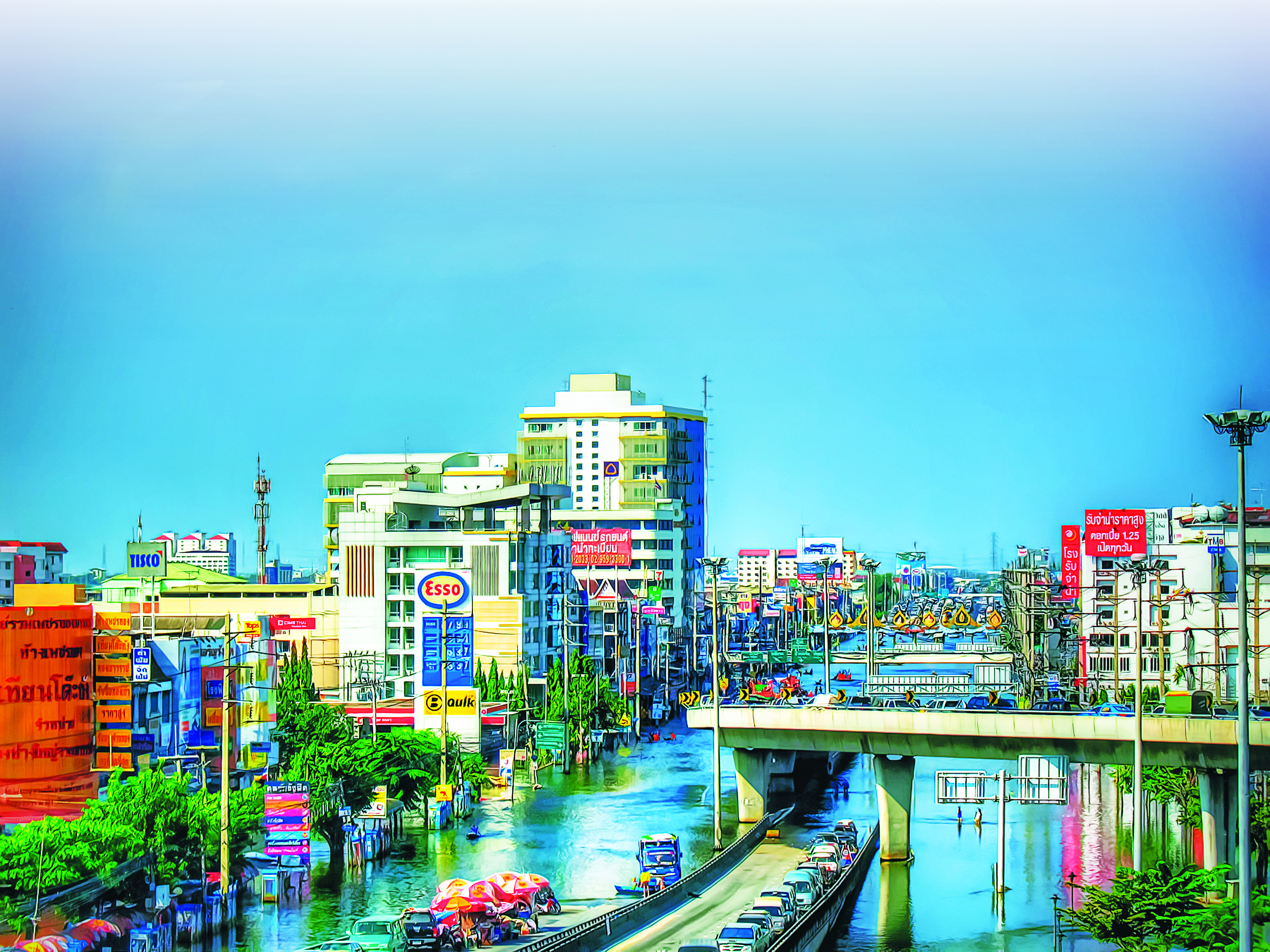Preparing for New Realities: Planners Weigh in on Adapting to Climate Change
This post originally appeared on Triple Pundit: http://www.triplepundit.com/2015/05/preparing-new-realities-planners-weigh-adapting-climate-change/
With climate uncertainty a new normal, planners from around the world are tussling with how to work with thrift so they don’t create and employ plans that may not work in an uncertain future. At last weekend’s annual American Planning Association conference in Se attle, for instance, planners mulled how to approach climate change and natural hazards at both the local level and worldwide. The Lincoln Institute of Land Policy sponsored the planning and climate change symposia.
attle, for instance, planners mulled how to approach climate change and natural hazards at both the local level and worldwide. The Lincoln Institute of Land Policy sponsored the planning and climate change symposia.
In some ways, adaptation and planning are interchangeable. Yet very few sessions at the conference dealt with climate adaptation and, oddly, while the event coincided on Earth Day weekend, none of the sessions or side conversations I participated in even mentioned it.
Of course, planners focus generally on people and the built form. And though the environmental movement and Earth Day may be moving for humans, APA has not come to meet Earth Day.
With decades of expertise on how to create change at the local level, I took careful notes about the recommendations from these experts on how best to be an adapter/planner. Here are my Top 10 takeaways:
- Since the future is random and chaotic, and climate change will create a new normal, plan with thrift and create double-duty solutions (which Judith Rodin outlines in her “The Resilience Dividend” about bouncing back from a crisis and achieving revitalization.). In addition, build in elasticity and steward resources toward prevention and recovery for when the real need arises. Be ready for surprise. (Julie Wormser, Boston Harbor Association.)
- Institutionalize a national legislative directive to reduce climate risk and build resilience in the face of climate change. At the same time, develop a capacity-building program to enable local government to translate directive into practical reality (Bruce Glavovic, Massy University (New Zealand)
- Just as planning isn’t only about bricks and mortar, adaptation must reflect mixing incomes and neighborhoods and focusing on social cohesion as both a prerequisite for adaptation and an outcome of it. (Lexi Bambas Nolan Episcopal Diocese of Texas)
- Planners are experts at bringing innovation to elected officials, recognizing that the only way to gain innovation (adaptation, planning or otherwise) is to make it politically attractive so elected officials are protected from the risk of losing constituents. (Gary Lawrence, AECOM)
- Resilience favors diversity and more choices. Use all of the amazing scenario analysis tools planners have introduced (even to the gaming world, remember SimCity?) to offer lots of choices (Jason Oliveira, Autodesk)
- Employ the influence of the money already spent on infrastructure (which will be around in that uncertain new normal) rather than demand a new pot of resilience-only money (Harriet Tregoning, HUD)
- For many planning constituents, a new plan can solve an unexplained problem, which makes it unattractive. Make certain the problem is clear, spelling out the opportunity cost of not pursuing the new plan. (George McCarthy, Lincoln Institute of Land Policy)
- Focus on solutions, not problems. The public needs to hear: “We are going to protect this neighborhood from flooding.” Not, “This is what a 100-year storm will look like in a climate changed world.” (Laura Tam, SPUR)
- Adaptation can be grouped into three categories: anticipatory; reactive; retreat. Our challenge is to move from static responses that, historically, have left us with ruins after disasters, to adaptive pathways. (Peter Byrne, Georgetown Climate Center)
- My personal favorite: Deal with planning conflicts (e.g., over water use, right-of-way interpretations, etc.) the same way you would deal with family conflict. Set religion and politics aside and, in their place, arrange a table with a large dish to pass, providing sustenance to the vigorous debate of each member of the family about the issue. (Lawrence)
Several of the planners I spoke with were bewildered, quite frankly, by my emphasis on climate adaptation. They reminded me that adaptation isn’t just about preparing for some future unexpected event. It’s about investing in your community in a way that delivers benefits every single day. Planners take into account wider social trends that may have no apparent association with natural hazard risk. They are expert at the avoidance imperative inherent in planning safer streets, stable housing markets and reliable infrastructure that we must use in all cases for adaptation.
All key elements of adaptation action lie at the heart of planners’ work. Perhaps that is why, several weeks ago at a Climate Change Resilient Development conferenceorganized by USAID in the District of Columbia, Heather McCray, director of vulnerability and adaptation and a part of WRI’s new Ross Center for Sustainable Cities, summed up a panel of planners from Vietnam to Uzbekistan by noting that climate adaptation experts have just discovered urban planners as their embedded allies.
Joyce Coffee is managing director of the Notre Dame Global Adaptation Index, a program of the Environmental Change Initiative. She has a degree in city planning.